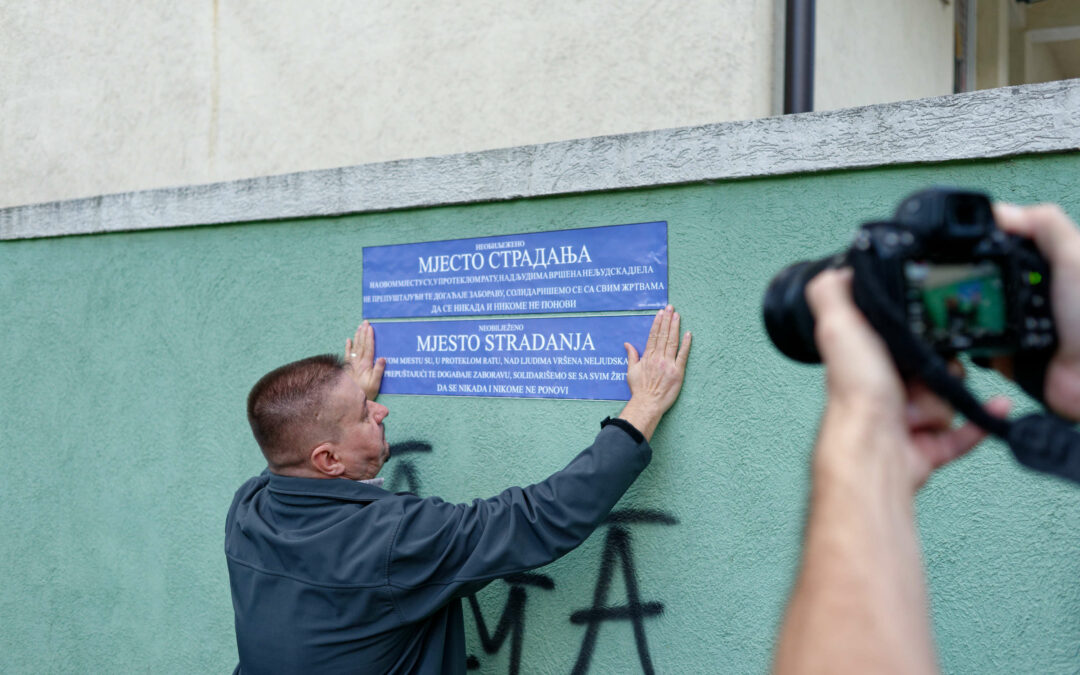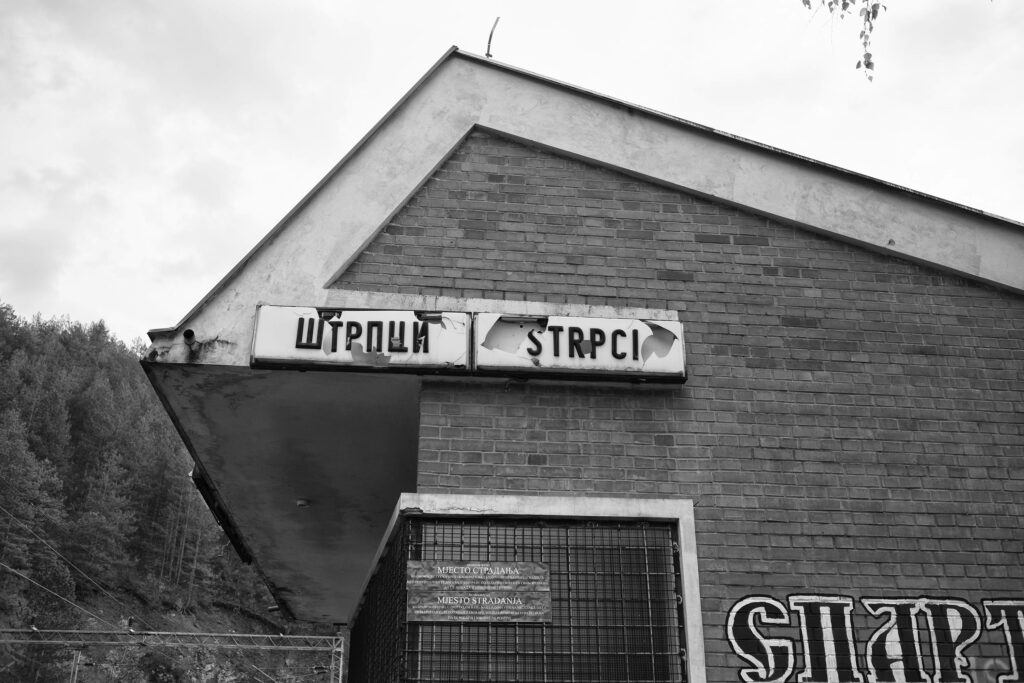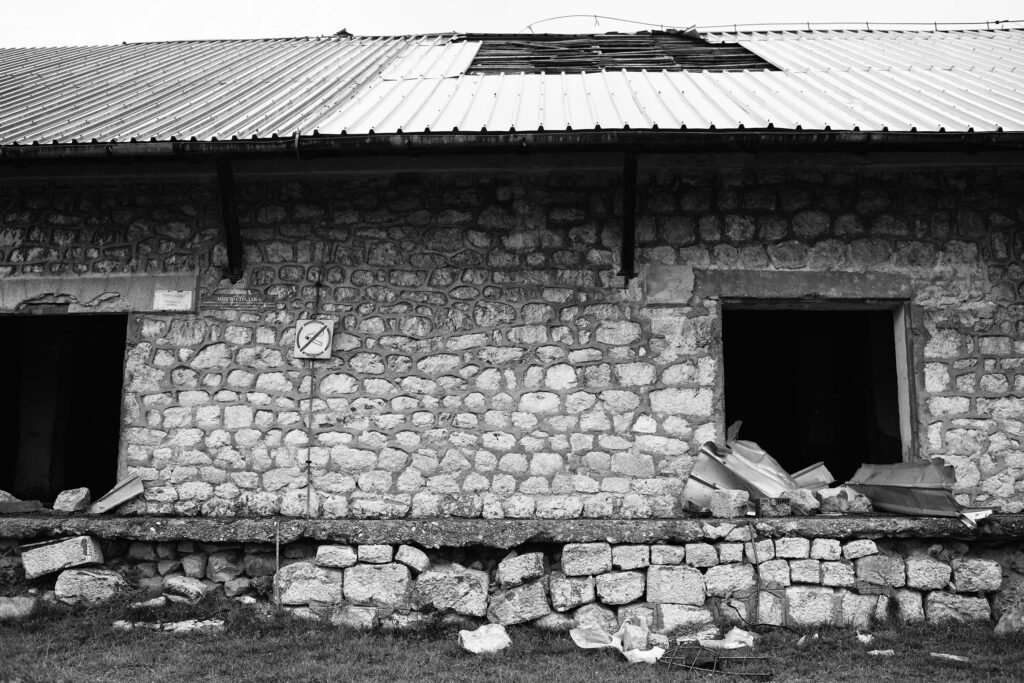In their 19th action, activists of the initiative Marking Unmarked Sites of Suffering visited sites in Štrpci near Rudo, the wider Kalinovik area and Hrasnica near Sarajevo. Over the past eight years, this initiative has marked 140 unmarked sites of suffering in BiH, including sites of atrocities against both Serbs, Croats, Bosniaks and others, without discrimination. For eight years, we have been raising our voice in support of those victims whose suffering is often side-lined and forgotten. To date, we have visited almost every city and municipality in Bosnia and Herzegovina and have tried to bridge the imaginary borders separating memories between the peoples of BiH by talking about the suffering of those who are in the minority and whose pain often does not fit into the majority narrative in the given area.
In this action we visited the following sites:
Last station Štrpci
When the winding railway track from Belgrade to Bar tries to go around or break through the high mountains of Zlatibor and Sandžak in order to descend into the Lim valley, it must make a small excursion from Serbia into Bosnia and Herzegovina. It is precisely that circumstance that proved unfortunate and attended to one of the most atrocious war crimes that were committed in the territory of BiH. Knowing that the railway track swerves into territory where they are the lords of life, death and war, on 27 February 1993, the Osvetnici paramilitary unit from Višegrad, led by Milan Lukić, intercepted passenger train No. 671 at the Štrpci station near Rudo, as it was making its way from Belgrade to Bar. They searched the train and took off 19 civilians whose “wrong” names, representing their “wrong” nationality, made them targets of robbers and criminals. In all the commotion, Tomo Buzov, a JNA officer originally from Kaštel, who was on his way to visit his son in Podgorica where he was doing his JNA military service, seeing something strange was going on and believing that there must still be rules, order and law, stood up against the removal of Bosniak civilians from the train. He was convinced that he would be able to reason with the Osvetnici and asked them, “Whose army are you?” Little did he know that this would also be his last station when he tried to help the abducted passengers. As so often happens, the Osvetnici also abducted him and finding his JNA military ID, they decided to kill him first, so as to hide their tracks, before they took the other passengers to the village of Mušići where they killed them and threw their bodies into the Drina River. Only four bodies of the killed passengers have been found to date.
In our last action, we visited the Štrpci railway station together with our partners, war veterans from Podrinje, former members of the Army of Republika Srpska and the Army of Bosnia and Herzegovina, Krsto Rakić, Mesud Kumro and Suljo Đogo, who have been working to build trust and reconciliation in their local communities for years and are prepared to take difficult and painful steps towards at least symbolically righting the wrongs that we have done to each other in the past. Together, we installed a temporary memorial at the railway station in Štrpci, a sign to say that it was an unmarked site of suffering. We have been setting up the same sign at all the sites we have visited to pay our respects to all victims in the same way.
Journey of death
You need a reason to come to Kalinovik, it is unlikely that this small mountain town will be on your way to somewhere. Today, it is mostly only known for being the birthplace of convicted war criminal and former general of the Army of Republika Srpska Ratko Mladić whose gargantuan visage greets you on a mural as you enter the town. The local people will also share their rural legend that it was the place where Adolf Hitler did his military service, as physically impossible as that may be. We came to Kalinovik to mark sites of suffering from the past war when Bosniaks from the Kalinovik area were imprisoned, tortured and killed at multiple locations in this municipality.
During the summer of 1992, the Gunpowder Warehouse near Kalinovik was used as a central location where Bosniaks from the surrounding area were brought. This former JNA building is used today as a barn, but its appearance, with dates and names from 1992 scratched into its walls, makes it seem like the war ended only yesterday and that the prisoners, 87 of them in all, were only just taken from there to their deaths.
When we were marking sites of suffering in the Kalinovik area, we were joined by Amer Kadić from the organisation “Istina Kalinovik 92” who explained how prisoners from the gunpowder warehouse were taken towards Foča and other locations, which for them often meant they would never return, it was a journey of death, they were killed whenever the truck stopped and buried by the road.
It was the same when the journey went towards “Meka brda“, once a JNA military training ground, known for being cold and harsh. That summer day, Meka brda were the last station on the journey to death for the Bosniaks from Kalinovik who were killed and buried by members of the Army of Republika Srpska. Amer showed us where they found the bodies of the victims and explained how the “Istina Kalinovik 92” association has been trying to mark these sites of suffering for a long time, but unable to do so at this location, they spray painted signs on the nearby trees to indicate that this was the spot where the killed victims were found. In addition to “Meka brda”, together we also marked the location on the Rogoj Pass, on the road between Sarajevo and Foča, where prisoners from the Kalinovik area were also killed.
Hrasnica – Seeds for future generations
In addition to sites in the Kalinovik and Rudo areas, part of our nineteenth action also included marking detention facilities in the Sarajevo suburb of Hrasnica. The basement rooms and garages located around the Army of RBiH command headquarters at the time were used as detention facilities for Serb civilians and soldiers who were brought there from the surrounding areas. The prisoners were killed and were subjected to inhumane conditions, beatings and abuse, while the female prisoners were sexually abused and raped.
In marking the sites of suffering in Hrasnica, we were joined by Edin Ramulić, a veteran of ARBiH, a prison camp survivor and peace activist who has been working for years with dedication and determination to build a culture of memory and peace. Edin’s presence gave us confidence and fortified our joint mission of building peace, once again confirming that these kinds of steps need to be made, as they are a form of sowing seeds for future generations who will reap the fruits of our efforts.
After the action of physically marking sites in the field, the initiative to mark unmarked sites of suffering continues its activities by creating a map of unmarked sites of suffering that can be found here. In this way, by recording all the sites that we have marked and documenting events associated with them in digital format, we provide new generations with an easy, simple and reliable way to find information about what happened during the past war. This is also a way to ensure that sites where no memorials have been installed and that remain unmarked can exist at least in the digital domain as reminders of what happened there. We remind as a warning against repeating.
Video from action:



